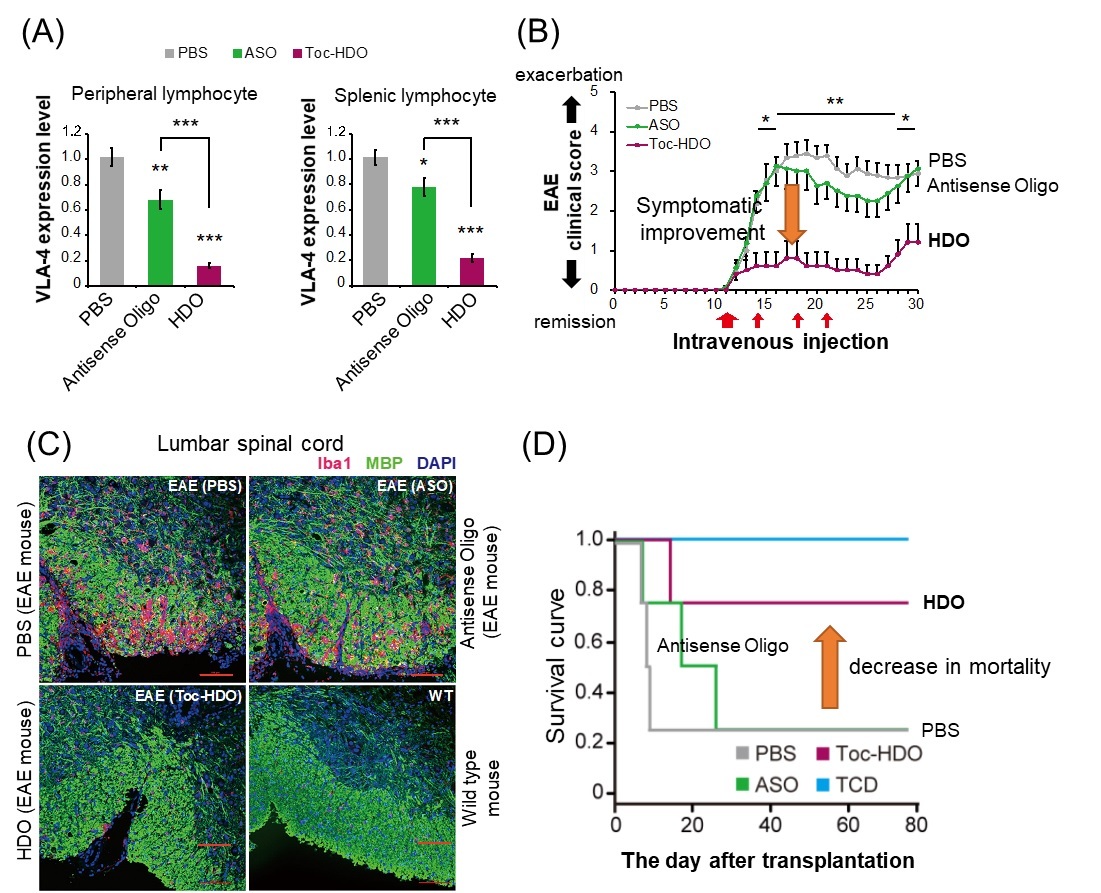How a Two-Faced Molecule Can Silence Problematic Genes
Tokyo, Japan – T and B lymphocytes, which are part of a group of immune cells commonly called white blood cells, work together to eliminate foreign invaders in the body such as viruses. However, certain diseases can arise when T and B cells are activated at inappropriate times, including autoimmune disorders and various cancers. In a recent article published in Nature Communications, a team led by researchers at Tokyo Medical and Dental University (TMDU) describe a technology called a heteroduplex oligonucleotide (HDO) that they developed to deliver to lymphocytes and regulate their functions.
Gene expression is at the root of controlling cellular activity. Disease can result when certain genes are either improperly turned off or are uncontrollably expressed. Therefore, scientists have aimed to develop therapeutic methods to restore gene expression levels to their healthy state, ideally only in the abnormal cells. One such modality is delivering specifically engineered DNA or RNA molecules that can locate the misexpressed gene messages and direct the cell to lower them back to normal levels. However, the most difficult part of this is ensuring the therapeutic molecules can efficiently reach their proper destination without being degraded by the cell.
“Our team designed a DNA/RNA hybrid molecule called an HDO,” says lead author of the study Masaki Ohyagi. “The specific sequence of the HDO can be altaered to target a particular gene of interest, while its backbone makes it stable within cells.”
A key part of the team’s HDO design is the addition of a molecule called α-tocopherol, which is crucial to its proper delivery. Because α-tocopherol is essential for proper lymphocytic immune responses, adding this allows the HDO to be delivered within peripheral blood and directed to lymphocytes. The team designed HDOs for several mouse genes and then intravenously injected them into lab mice.
“We found that our HDO technology was able to specifically silence these genes in mouse lymphocytes more robustly and stably, and also with less toxicity, than other previous versions of this method,” states Takanori Yokota, senior author of the article. “Our studies also showed that the HDOs enter these cells through a process called endocytosis.”
After finding that their technology was effective at gene silencing, the TMDU team investigated if it could be useful as a disease treatment. They designed an HDO targeting a gene called Itga4, which is central to the pathogenesis of experimental autoimmune encephalomyelitis (EAE), a mouse model for multiple sclerosis (MS).
“Intravenously injecting these mice with an Itga4-targeting HDO delayed the onset and improved EAE symptoms and reduced both inflammatory cell infiltration and spinal cord demyelination,” explains Ohyagi.
This work demonstrates the powerful gene silencing effects of the HDO technology, as well as its superior delivery capabilities relative to other similar methods. Most significantly, the Itga4-specific HDO was able to improve outcomes in an MS mouse model, suggesting it may be useful as a novel therapeutic that could be developed for human immune-mediated diseases.

(A) In normal mice, administration of HDO (red bar) more drastically suppresses α4β1 integrin gene expression in peripheral and splenic lymphocytes compared to antisense oligonucleotide (green bar). (B) In experimental autoimmune encephalomyelitis (EAE) mice, administration of HDO targeting α4β1 integrin after the onset of symptom has shown improvement in clinical score. (C) Administration of HDO targeting α4β1 integrin prior to the onset of EAE mice results in reduced Iba1-positive inflammatory cell infiltration (red) and improved demyelination (green) in Lumbar spinal cord.(D) In the mouse model of graft-versus-host-disease (GVHD), transplantation of spleen-derived T cells together with bone marrow cells after treatment with HDO targeting α4β1 integrin improved the survival curve. TCD : Transplanted bone marrow cells without spleen-derived T cells
The article, “DNA/RNA heteroduplex oligonucleotide technology for regulating lymphocytes in vivo,” was published in Nature Communications at DOI: 10.1038/s41467-021-26902-8
Summary
Journal Article
TITLE:DNA/RNA heteroduplex oligonucleotide technology for regulating lymphocytes in vivo
DOI:https://doi.org/10.1038/s41467-021-26902-8

